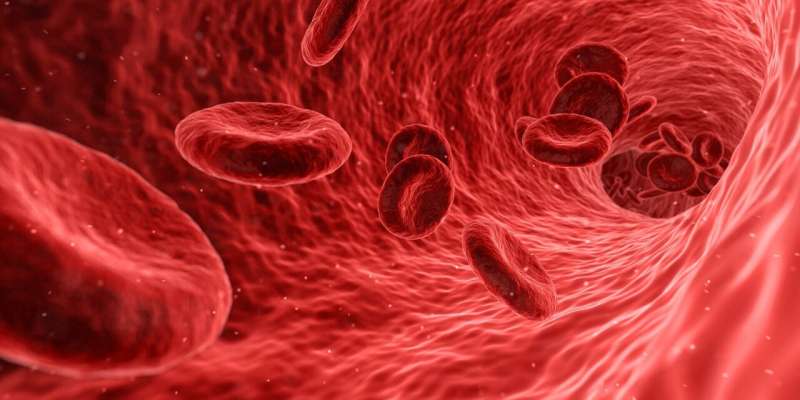This article has been reviewed according to Science X's editorial process and policies. Editors have highlighted the following attributes while ensuring the content's credibility:
fact-checked
peer-reviewed publication
trusted source
proofread
New study reveals global anemia cases remain persistently high among women and children

Anemia affected nearly 2 billion people in 2021, impacting women to a greater degree than men. In a new study covering three decades of global anemia data (1990–2021), a complex picture emerges of how several key factors play into the divergence in success stories among men, women, and children.
Published in The Lancet Haematology, the study was conducted by the Institute for Health Metrics and Evaluation (IHME), based in Seattle, and its Global Burden of Disease anemia collaborators.
"From this 30-year study, we know the global picture around anemia has improved, but there are still wide disparities when you narrow the focus on geography, gender, and age," says Dr. Nick Kassebaum, senior author of the study, head of IHME's Neonatal and Child Health team, and Professor in Anesthesiology at the University of Washington.
"We modeled 37 underlying causes for anemia. It's very important for clinicians to treat these causes in parallel to the anemia itself. We hope they use these data to design more comprehensive intervention and treatment plans, especially for the most vulnerable—women of reproductive age, children, and the elderly."
Globally, in 2021, 31.2% of women had anemia compared with 17.5% of men. The gender difference was more pronounced during the reproductive years, ages 15–49. In this age group, anemia prevalence in women was 33.7% versus 11.3% in men.
"Over the years, there's been a lot of focus on reducing anemia globally, but as a group, women and children have shown the least progress," says Will Gardner, researcher at IHME and lead author of the paper.
"This is a nuanced situation that revolves around access to nutrition, socioeconomic status, unmet need for contraception, and the ability to identify and treat underlying causes of anemia. Our data show how one group—adult men—has fared much better than two other groups, women (ages 15–49) and children younger than five years. This speaks to the need for a shift to multisectoral approaches and improved cultural awareness to make sure women and children are not left behind."
Causes of anemia and impact
The leading cause of anemia in 2021 was dietary iron deficiency, constituting 66.2% of total anemia cases, with 825 million women and 444 million men affected globally. Inadequate intake of iron may have been the single most common cause of anemia, but many other conditions are major drivers of anemia.
The study found that gynecological disorders and maternal hemorrhage were important contributors to anemia burden among women of reproductive age. For children younger than five years, the main cause of anemia was dietary iron deficiency, but hemoglobinopathies, other infectious diseases, HIV/AIDS, and malaria were also important contributors in geographic locations where these diseases are prevalent.
"Anemia plays out differently depending on the group that's struggling with the condition. For children, anemia can impact brain development and cognition, so early treatment and management are crucial. This might mean accessing high-quality, nutrient-rich foods and/or receiving treatment for parasitic infections and malaria," says Dr. Theresa McHugh, scientific writer at IHME who focuses on neonatal and child health.
"For many young women and girls, there's an education gap about blood loss during menstruation, inadequate options for effectively managing menstrual problems in those who have them, and not enough knowledge about how to manage and/or reverse anemia when it occurs. We know anemia can impact mental health because the associated weakness and fatigue can interfere with desired activities."
Previous studies have shown that anemia is associated with increased rates of anxiety and depression and higher rates of preterm labor, postpartum hemorrhage, low birthweight, short gestation, stillbirth, and infections for both child and mother.
Regions and risk
The research shows sub-Saharan Africa and South Asia are currently facing the greatest burden. In 2021, Western sub-Saharan Africa (47.4%), South Asia (35.7%), and Central sub-Saharan Africa (35.7%) had the highest anemia prevalence. The regions with the lowest anemia are Australasia (5.7%), Western Europe (6%), and North America (6.8%).
Countries with highest anemia: Mali, Zambia, Togo (each had >50% anemia burden). Countries with lowest anemia: Iceland, Norway, Monaco (each had <5% anemia burden)
Regional variation in disease distribution was also reflected in cause-specific anemia burden. For example, HIV/AIDS was the second largest contributor to anemia in Southern sub-Saharan Africa. Anemia due to malaria was most prominent in the Central, Eastern, and Western sub-Saharan Africa regions.
More information: Prevalence, years lived with disability, and trends in anaemia burden by severity and cause, 1990-2021: findings from the Global Burden of Disease Study 2021, The Lancet Haematology (2023). DOI: 10.1016/52352-3026(23)00160-6





















